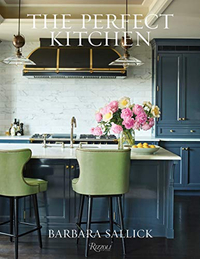Kitchens without wall cabinets – 7 reasons why interior designers are ditching cabinets this year
If you are short on space, or just want to lighten the load in your kitchen, ditching wall cabinets is the latest trend to embrace


Linda Clayton
Kitchen cabinets are often considered a crucial element in the kitchen; providing extra storage for crockery, spices and small appliances, however, the latest kitchen designs have done away with those bulky upper cabinets.
As it turns out, the space between the countertop and ceiling is ripe for rediscovery. Decorating above lower kitchen cabinets is a wonderful way to fill the space with an attractive feature, rather than just letting it gather dust or be filled with uninteresting storage.
But will this trend catch on? Yes, we think so. Wall decor ideas – rather than upper kitchen cabinets – can, indeed, give your space a whole new personality. Here, we take you through the best kitchens without wall cabinets, plus give you plenty of inspiration for your own kitchen remodel.
Do you need wall cabinets in a kitchen?
The short answer is no, you certainly don't need wall cabinets in a kitchen. In fact, some of our favorite designs have ditched them altogether.
‘In lieu of kitchen cabinetry, the walls of kitchens can be transformed with shelving, art, and color, providing a daily dose of happiness,’ enthuses Erica Davis, co-founder of Murus Art.
So if you're keen to give your kitchen a whole new look for 2023, we've curated the best ways to style a kitchen without wall cabinets – along with inspiring pictures of kitchens – to help you transform your space for the better.
The Perfect Kitchen, Barbara Sallick | From $21.87 at Amazon
Learn more about the beautiful and inspirational kitchen design in this bestselling book by Barbara Sallick. Find practical advice as well as hundreds of images to inspire your own remodel
1. Go for a simple shelf or display
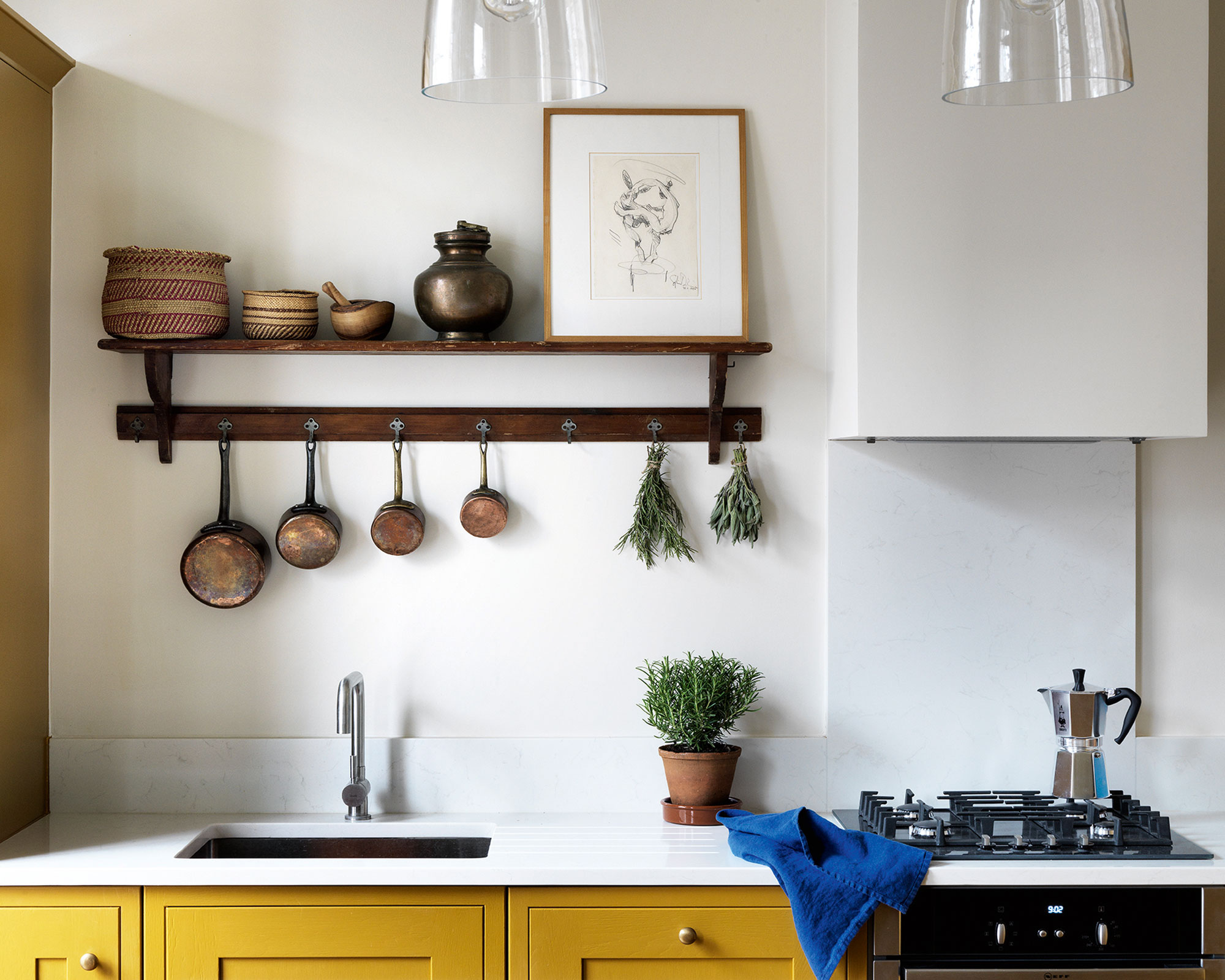
'It might seem counter-intuitive in a small kitchen where space is at a premium, but unless the ceilings are very high I like to do away with wall cabinets altogether in favor of shelving,' says interior designer Lonika Chande.
'It looks much better and opens up the space. I am always on the lookout for vintage shop fittings and characterful reclaimed planks that can be repurposed as shelves. I then decant what I can into Kilner jars for display, alongside stacks of crockery, linen, and the odd jug. I love nothing more than to be left to it with my Kilner jars and a Dymo labeling machine – unbelievably satisfying work and so visually pleasing too.'
2. Decorate above kitchen cabinets
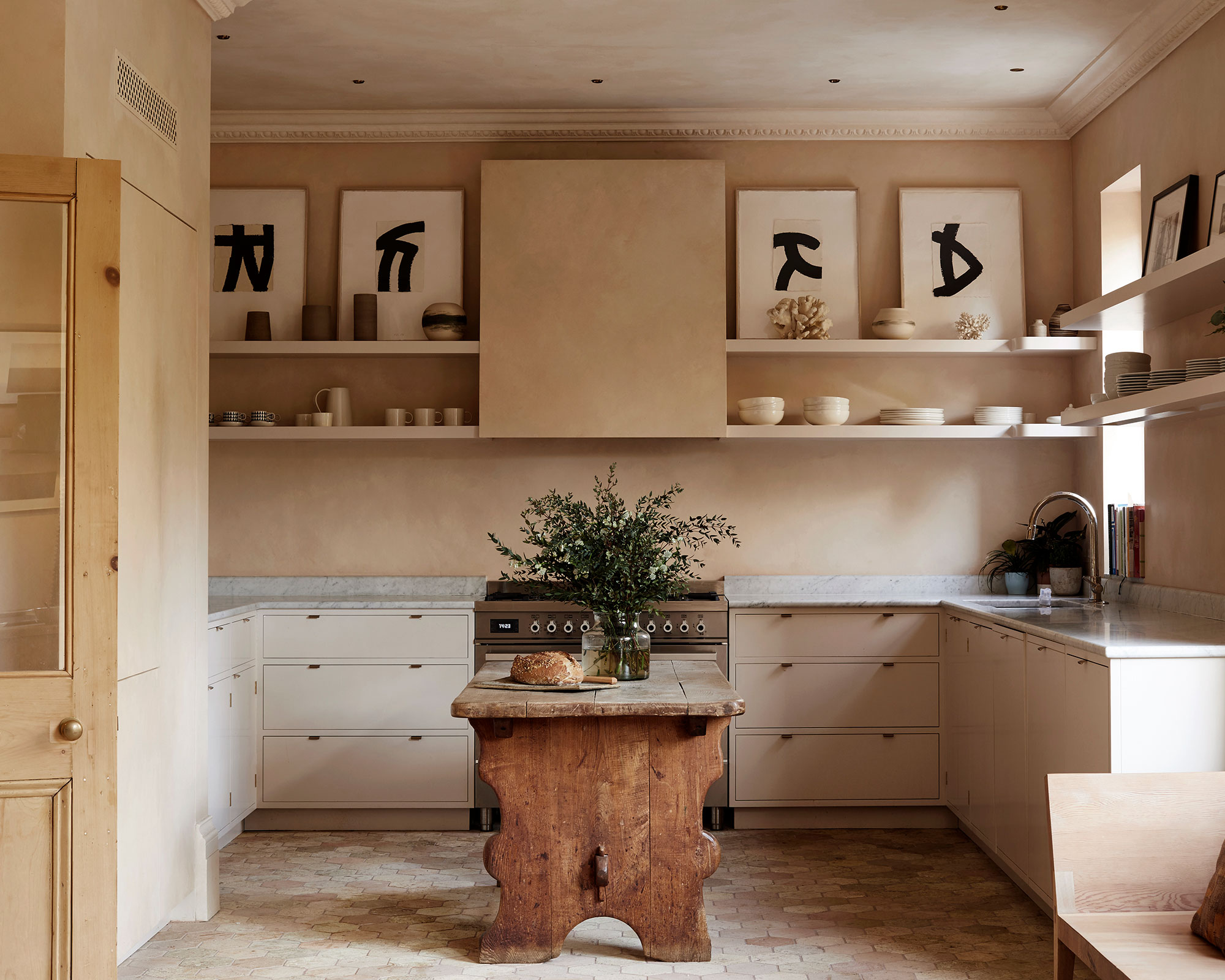
The best small kitchen layouts are crucial when designing a kitchen that makes the most out of a room with less space than you’d like. If your room is limited in space or cavern-like, you might want to consider doing away with wall cabinets altogether. You'll be grateful for the extra kitchen wall decor space, too.
‘When planning a small kitchen, you might consider avoiding the “fully fitted” look and perhaps have open shelves above the lower cabinets or use glass in the upper cabinets to provide a degree of reflection and additional depth,' says Claire Sa, director, De Rosee Sa.
3. Keep wall space free for decorative art
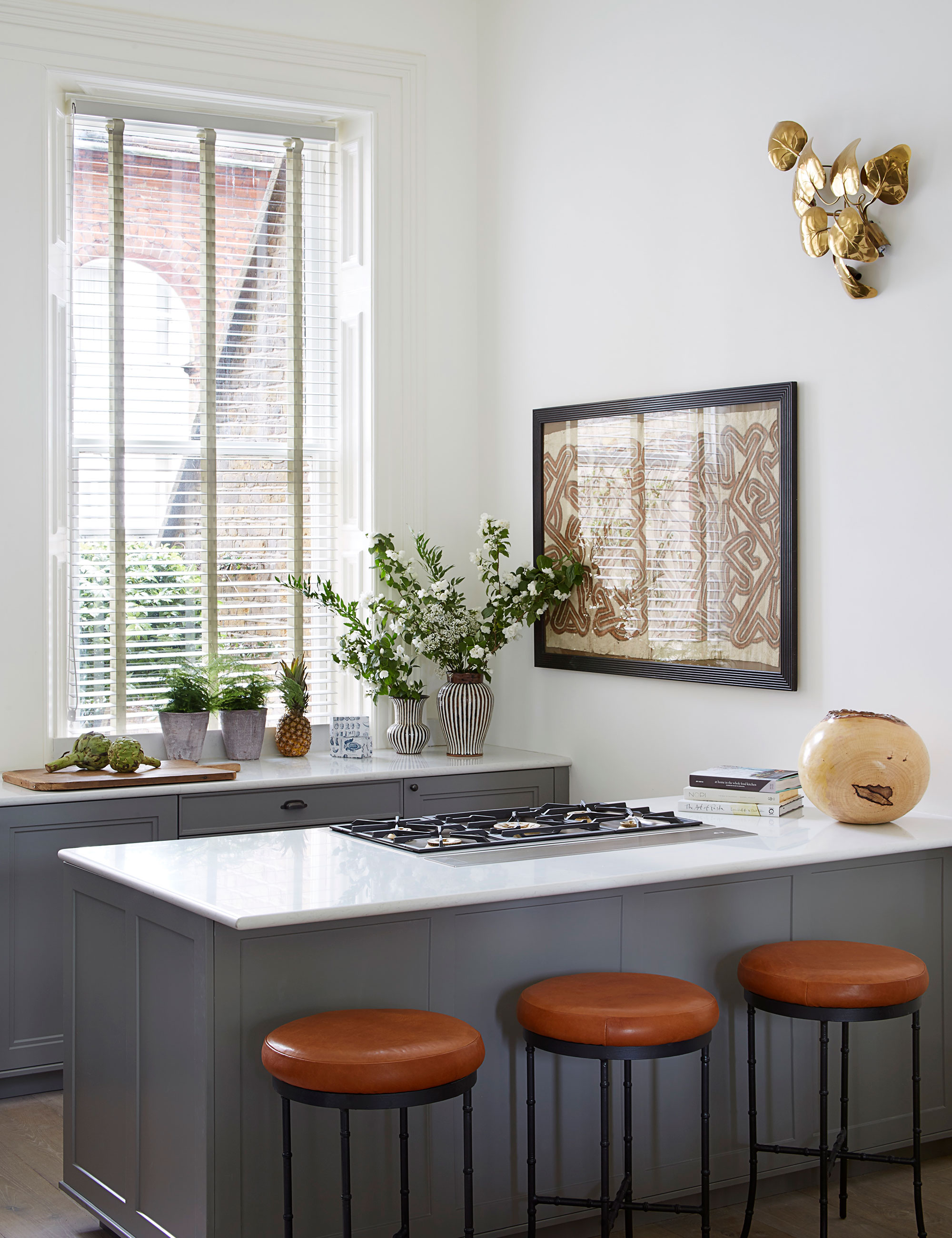
‘Wall units can overwhelm a small kitchen,' says Katie Lion, senior interior designer, Kitesgrove. 'Sometimes less is more. In this kitchen, we decided not to hang wall cupboards to preserve the beautiful natural light and airy atmosphere and help the space feel much bigger. The eye is left free to wander above the base units towards the focal point, a large artwork full of pattern and color, and a striking bronze wall sconce, which is both sculptural and functional.
'To compensate for reduced kitchen storage, we recommend drawers under countertops as they are easier to navigate in a tight space than cupboards, and a slim breakfast bar for additional seating without taking up too much room.’
4. Keep the kitchen free from clutter and chaos
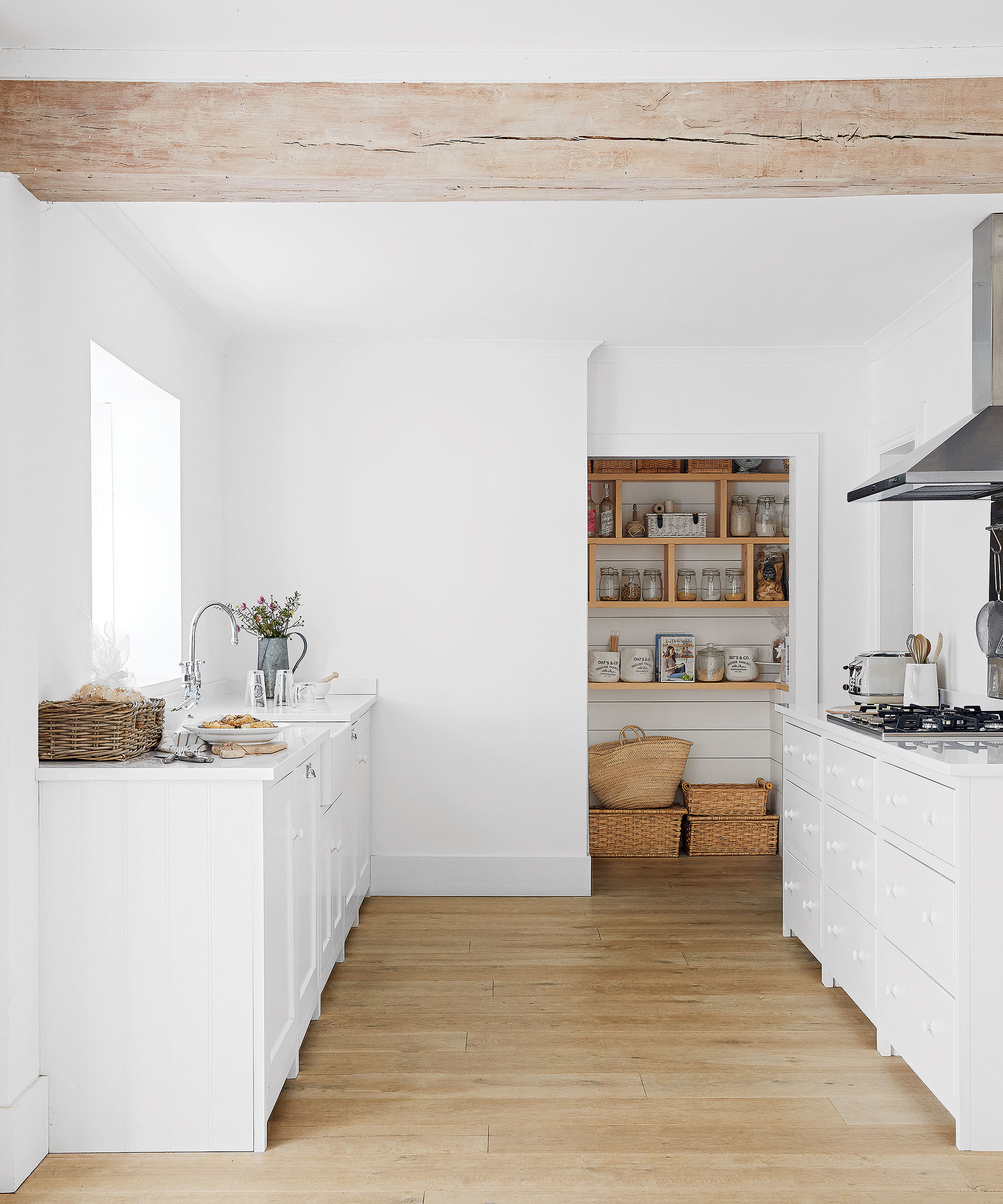
Completely doing away with upper kitchen cabinets can not only make your small kitchen look bigger, but also help to clear the clutter and chaos in this high-traffic space.
With busy modern lives, homeowners are now more aware of their decorating choices and aim to find a balance between streamlined minimalism and luxurious comfort for their kitchen ideas. This minimalist kitchen is a masterclass in keeping things simple.
Minimalism is rooted in the principle of ridding this multi-functional space of unnecessary clutter. It is also about harnessing the power of a 'clean' space that features only a few meaningful, useful items.
5. Maximize wall space
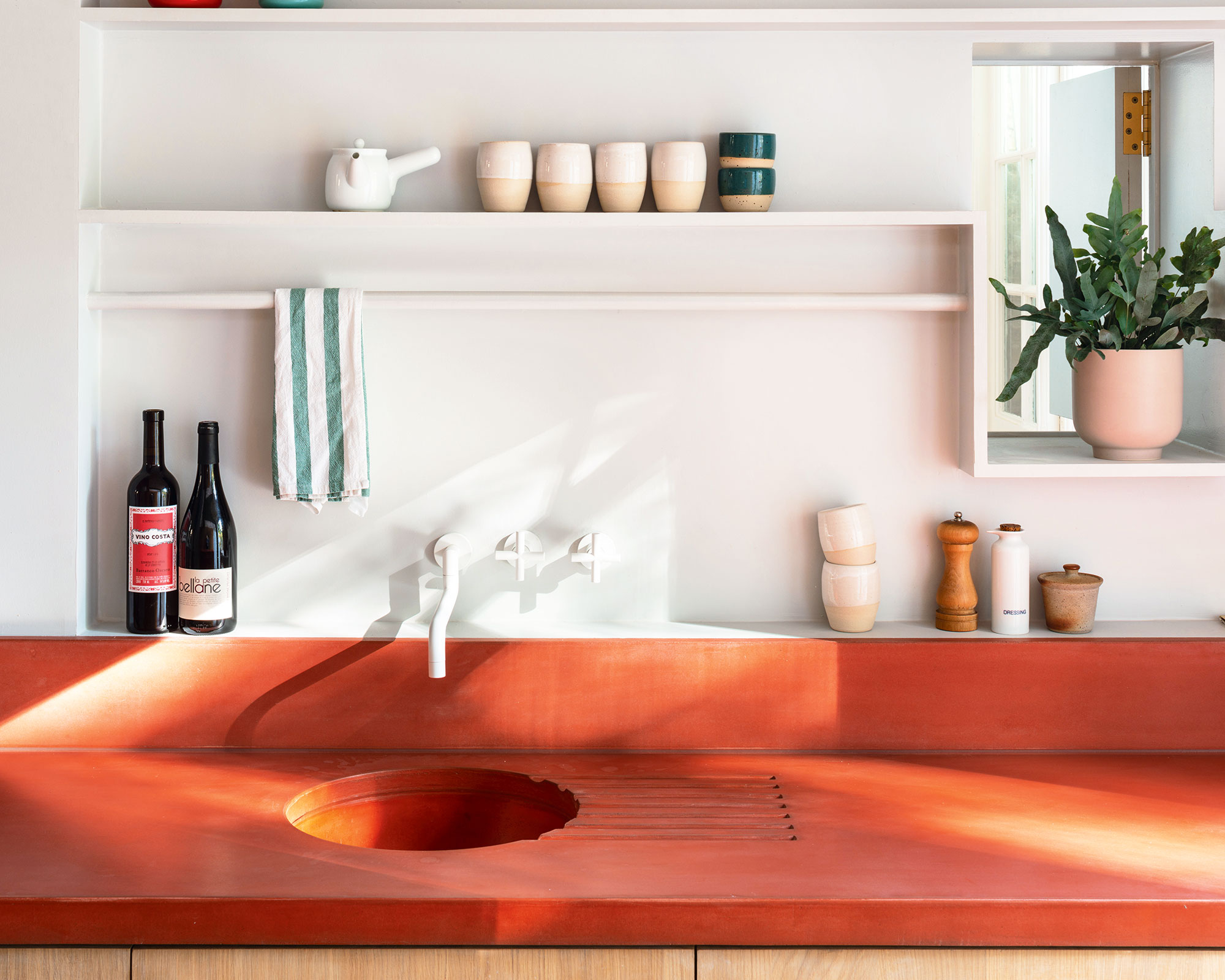
If your kitchen proportions are limited, introduce a decorative display on walls and decorate above kitchen cabinets. Architect Ben Allen of Studio Ben Allen emphasizes the practical function of shelving above the kitchen countertop in bijou kitchen design.
‘We love providing space to display all things cooking and food-related, so we often design open shelves and no wall cabinets whatsoever,’ he says. ‘On the lowest shelf, there will be space for items that are used every day – salt and pepper, oil and vinegar, perhaps an open bottle of wine and pots of herbs.’
He might add a rail for hanging tea towels, cooking implements, small pans, or strings of onions and garlic. Higher shelves can be used for attractive cups, teapots, and china, and variations in height and depth can bring playful touches to the design.
6. Put the focus on color instead
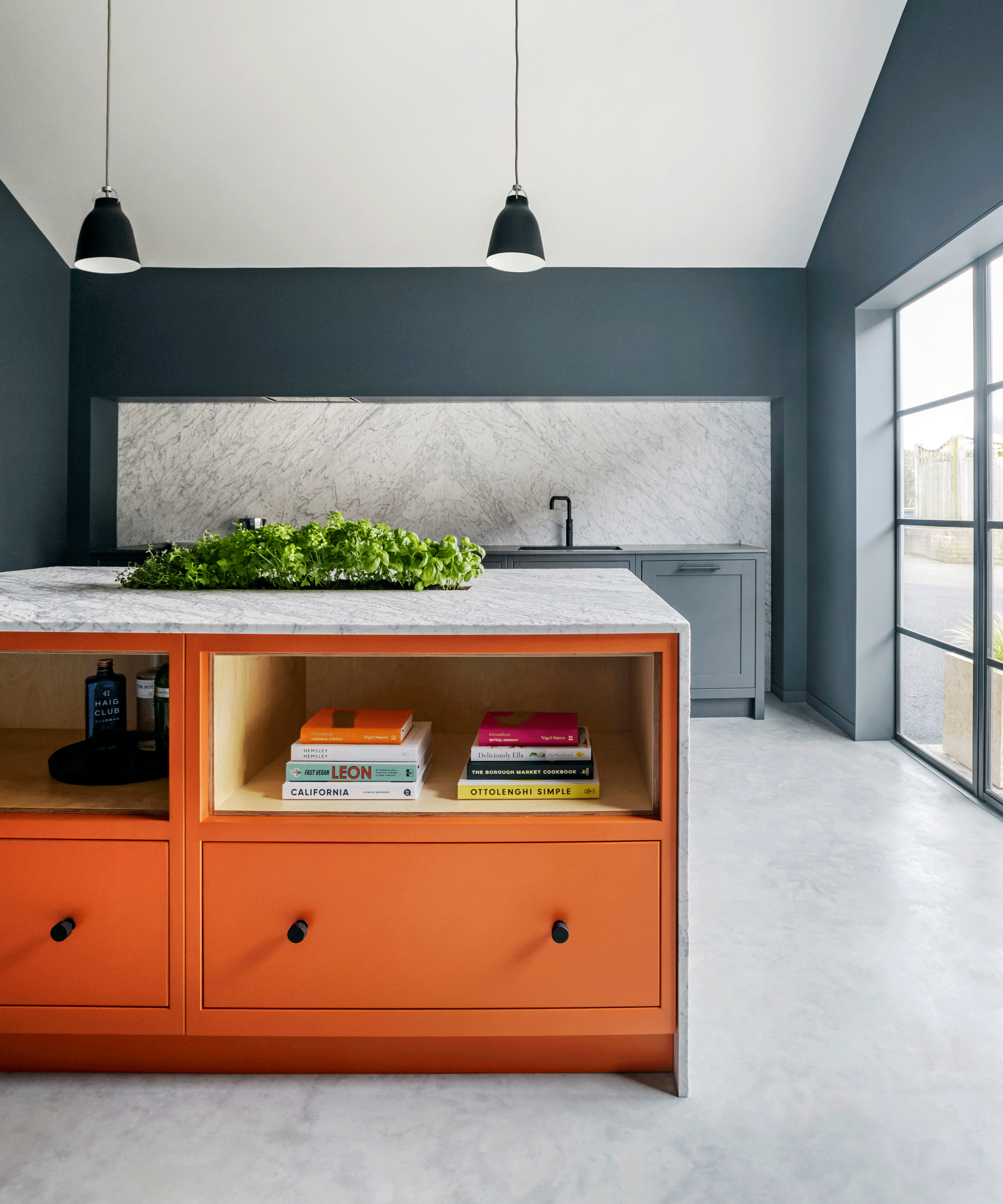
Not all kitchens without wall cabinets are devoid of space or are minimal in appeal. Make a conscious design decision about what to put on display and what to hide from view, and use kitchen color to showcase your creativity instead.
For a truly modern kitchen aesthetic, conceal the functional elements such as ovens and other appliances within lower cabinetry as this will soften the impact on the space.
For homeowners afraid of missing out on the current vogue for color, painting the lower cabinets and island in bright hues, or a two-tone kitchen color scheme could be the answer, as demonstrated in this colorful kitchen by Jasper Middleton, design director, Middleton Bespoke.
7. Display jars and crockery on open shelves

It's not only modern kitchens that are starting to forgo wall cabinets. This design aesthetic works wonderfully in country, cottage, and vintage kitchens. If you wish to display vertically, look to shelves and hooks. Kitchen shelving ideas, especially open shelving are a great option if you are the proud owner of an impressive crockery collection, or are a keen cook who appreciates having ingredients close at hand.
Not everything needs to be hidden away when it comes to storage. In fact, decorative kitchen storage ideas and solutions can make a huge difference to your kitchen's look and feel.
For a stylized look, stack collections of your favorite crockery, line up fresh herbs, and incorporate small pieces of art along a run of open shelving.
Sign up to the Homes & Gardens newsletter
Design expertise in your inbox – from inspiring decorating ideas and beautiful celebrity homes to practical gardening advice and shopping round-ups.

Jennifer is the Digital Editor at Homes & Gardens. Having worked in the interiors industry for several years in both the US and UK, spanning many publications, she now hones her digital prowess on the 'best interiors website' in the world. Multi-skilled, Jennifer has worked in PR and marketing and occasionally dabbles in the social media, commercial, and the e-commerce space. Over the years, she has written about every area of the home, from compiling houses designed by some of the best interior designers in the world to sourcing celebrity homes, reviewing appliances, and even writing a few news stories or two.
-
 Orange and green is the bold color pairing quietly transforming homes in 2025 – here's 4 reasons why
Orange and green is the bold color pairing quietly transforming homes in 2025 – here's 4 reasons whyInterior designers are making the orange and green combination work wonders – this is how you can too
By Sophia Pouget de St Victor Published
-
 This Michelle-Pfeiffer-approved chair is made of a forebodingly unusual material, opening the debate: Is it a rustic stunner, or a danger to sitters?
This Michelle-Pfeiffer-approved chair is made of a forebodingly unusual material, opening the debate: Is it a rustic stunner, or a danger to sitters?The actress took to Instagram with a chair made of a controversially sharp material – and fans are unsure of how they feel about it
By Sophie Edwards Published
